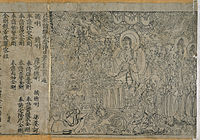
Photo from wikipedia
In the first decades of the nineteenth century, British Calcutta stood as one of the most important cities in the world for the editing, printing, and selling of Arabic books.… Click to show full abstract
In the first decades of the nineteenth century, British Calcutta stood as one of the most important cities in the world for the editing, printing, and selling of Arabic books. Before the famous Bulaq Press in Cairo was established in 1820, from 1801–19, European Orientalists and Indian munshis (scribes and clerks) and maulvis (Arabic, mawlanas), alongside one Yemeni scholar, had already printed 22 Arabic titles in movable type—many for the first time—at Fort William College in Calcutta (alongside 18 in Persian and 24 in Sanskrit).1 By 1831, a published “List of Oriental Works for Sale at the Government Education Depository, near the Hindu College, Potoldanga, Calcutta,” advertised 27 Arabic, 31 Sanskrit, 36 English, 16 Hindi and Urdu, 30 Persian, and 29 Bengali books.2 Far from a marginal undertaking, Arabic books represented a sizeable proportion of printing in Bengal at the beginning of the nineteenth century.
Journal Title: International Journal of Middle East Studies
Year Published: 2023
Link to full text (if available)
Share on Social Media: Sign Up to like & get
recommendations!